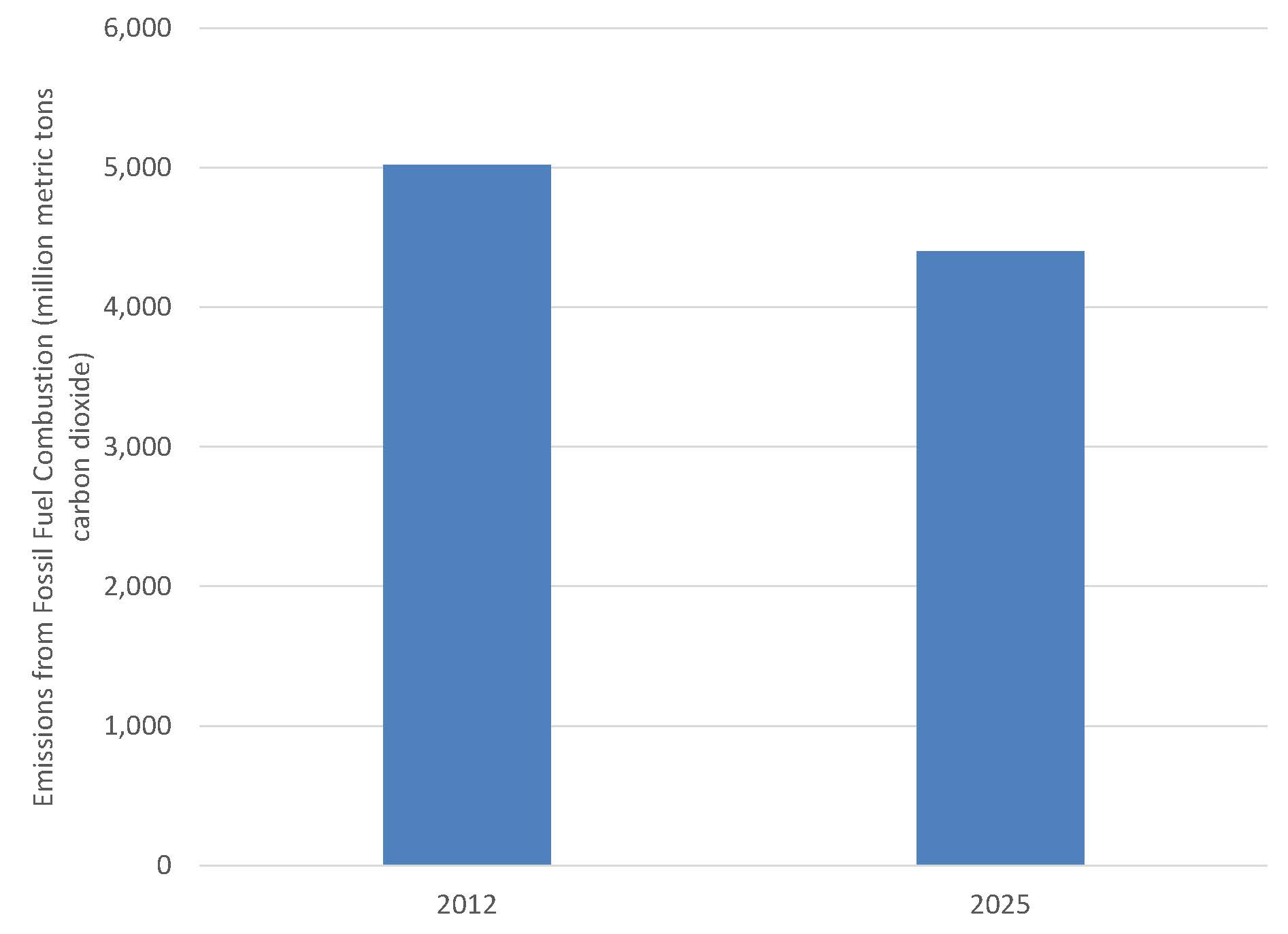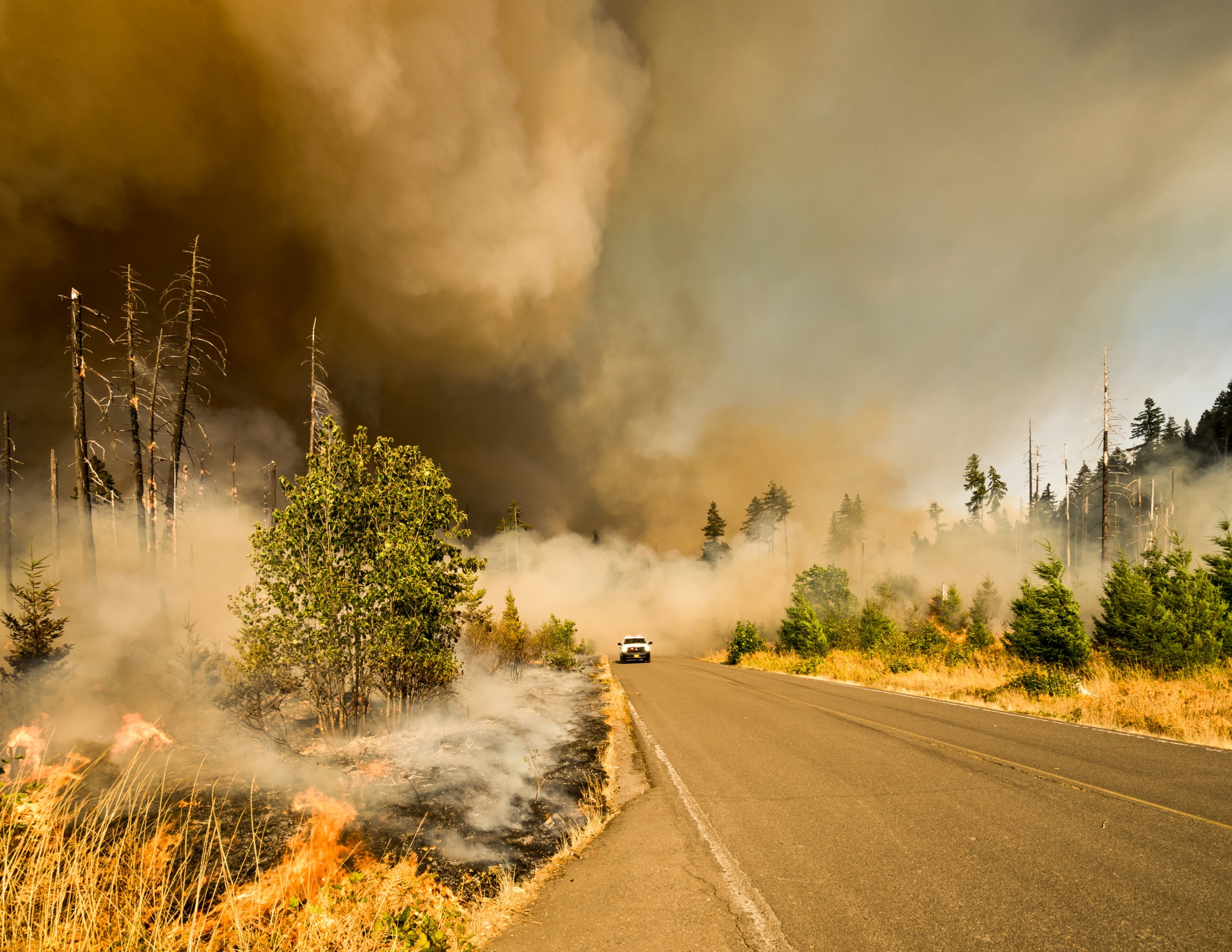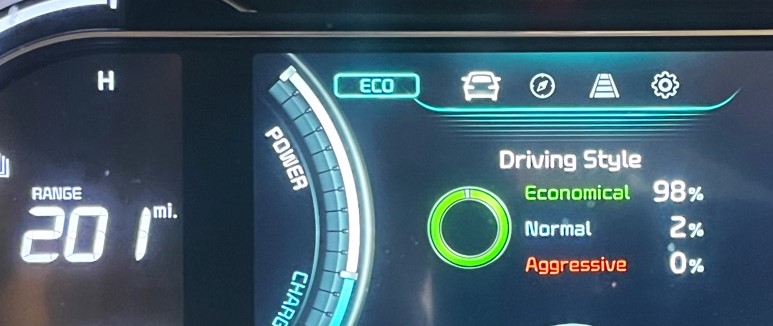
Path to the Paris Climate Conference
American Progress in Cutting Carbon Pollution Could Pave the Way for Global Action
The United States is responsible for more climate-changing pollution in the atmosphere than any other country. As the fight to avoid the worst effects of global warming intensifies, American pollution-cutting efforts are setting an example for the world.
Deeper cuts are needed at home and abroad, but by fully implementing policies already enacted at the state and federal levels – including the Clean Power Plan, the first national policy to limit climate pollution from power plants – the U.S. can prevent as much as 1.1 billion metric tons of carbon dioxide pollution annually by 2025.

Downloads
In December 2015, world leaders will convene in Paris to negotiate an international agreement to address the serious threat of global warming. As the country responsible for more climate-changing pollution in the atmosphere than any other, the United States has a moral obligation to lead the world into action.
The best way to lead is by example. And, as this report demonstrates, the United States is doing just that. By following through and fully implementing policies already enacted at the state and federal levels – including the Clean Power Plan, the first national policy to limit climate pollution from power plants – the nation can reduce carbon dioxide pollution from fossil fuel combustion (the leading cause of global warming) by 27 percent below 2005 levels by 2025. In other words, these policies can prevent as much as 1.1 billion metric tons of carbon dioxide pollution annually by 2025, more than the annual emissions of the entire nation of Germany, the world’s sixth largest polluter.
U.S. action to cut pollution is a critical step on the path to the Paris climate talks. To deliver on President Obama’s pledge to reduce emissions and secure America’s leadership, officials at all levels of government must follow through on existing policies, including the Clean Power Plan, and defend them against attack. Meeting the president’s pledge will also require the United States to do more to reduce emissions of other global warming pollutants beyond carbon dioxide.
However, meeting the pledge alone will not be enough to solve the problem. The United States should push for a strong international agreement in Paris, one capable of limiting global warming to less than 2°C (the consensus target to guide action on climate). To avoid the worst effects of global warming, we must cut emissions further, faster. The United States must deepen commitments to reduce global warming pollution and find additional ways to increase clean energy, expand energy efficiency and deploy zero-emission transportation options.
Figure ES-1. Estimated Carbon Dioxide Emissions in 2025 with Adopted and Proposed Clean Energy Policies

The Clean Power Plan, the first federal limit on global warming pollution from electricity generation, will drive greater reductions in carbon dioxide emissions than any other policy adopted to date.
- Coal- and natural gas-fired power plants are the largest source of global warming pollution in the United States.
- The Clean Power Plan, as proposed in 2014, could reduce carbon dioxide pollution by more than 500 million metric tons (MMTCO2) by 2025, assuring the achievement of nearly one-third of the emission reductions needed to meet the president’s climate reduction pledge.
- As a result of this policy, wasteful electricity consumption will decline, power plants will operate more efficiently, and more electricity will come from clean, renewable sources. A number of policies already in place to reduce emissions from electricity (discussed below) will help states comply with the Clean Power Plan.
Economy-wide caps on global warming pollution adopted by seven states reduce emissions from a wide range of sources.
- California, Connecticut, Hawaii, Massachusetts, Maryland, New Jersey and Rhode Island have adopted broad caps on emissions that, when implemented fully, will reduce pollution by 242 MMTCO2 in 2025.
- California’s cap, for example, calls for cutting global warming pollution to 1990 levels by 2020 and to 40 percent below 1990 levels by 2030. The state will achieve these savings by improving the efficiency of vehicles, increasing energy efficiency, and boosting renewable energy generation, among other measures.
- More than 80 percent of the savings from the state caps come from California’s actions, both because the state is large, and because it has pledged to make the deepest cuts in emissions.
State and federal policies will reduce wasteful energy use.
- As a result of current policy commitments, by 2025, new homes and businesses will use less energy, and many existing buildings will have been renovated to cut energy use. Appliances will provide the same functions as today while consuming less electricity and natural gas. Less energy will be needed to provide lighting.
- Federal appliance efficiency standards and state ratepayer-funded programs to reduce energy waste in homes and businesses will reduce pollution by 235 MMTCO2 in 2025 compared to emissions without these programs.
Emissions from cars, SUVs and light-duty trucks – which together represent the biggest source of pollution from transportation – will be 10 percent lower in 2025 due to improved vehicle fuel economy and emission standards.
- As a result of national and state policy, a typical new car in 2025 will go nearly 17 miles farther on a gallon of gas than a typical new car in 2015.
- National adoption of the global warming pollution standards in the Clean Cars Program, a policy originally developed by California and 13 other states, means that passenger vehicles will produce 179 MMTCO2 less in 2025 than would otherwise have been the case.
More wind, solar and other clean energy generation will reduce the nation’s reliance on electricity from coal and natural gas.
- Wind energy production tripled from 2008 to 2014, while solar generation grew by an average of 65 percent per year from 2010 to 2013. With the right policy support, this growth in renewable energy will continue.
- Twenty-eight states and Washington, D.C., currently have renewable energy requirements driving growth in wind and solar energy, with many benefits and little to no cost to consumers. These policies will reduce emissions by 57 MMTCO2 in 2025.
The Regional Greenhouse Gas Initiative (RGGI) will produce nationally significant reductions in power plant emissions.
- Nine Northeastern states have adopted a regional cap on emissions from power plants. By requiring power plant operators to purchase pollution permits, RGGI creates a financial incentive for electricity generators to cut pollution. Funds from the sale of permits support investment in energy efficiency and clean energy technology.
- RGGI will cut global warming pollution by 55 MMTCO2 in 2025 compared to a scenario without the policy. Like other policies that reduce emissions from electricity consumption, RGGI will help participating states comply with the Clean Power Plan.
Heavy duty vehicles – such as tractor-trailers, buses and delivery trucks – will use fuel more efficiently.
- Until recently, there were no standards for fuel efficiency in medium- and heavy-duty vehicles. As a result, tractor-trailers currently travel only about 6 miles for every gallon of fuel burned.
- Federal requirements for improved fuel efficiency in heavy-duty vehicles will reduce emissions by 29 MMTCO2 in 2025 compared to a scenario without the standards.
- An expected second phase of efficiency improvements will deliver even greater reductions than estimated here.
The combined effect of these policies (excluding overlapping policies) will be to reduce U.S. carbon dioxide emissions by 1.1 billion metric tons per year in 2025, compared to a scenario in which those policies did not exist. The greatest emission reductions occur in states that that have adopted economy-wide caps on global warming pollution or that have carbon-intensive electricity sources.
The actions the United States has taken to date are necessary – but not yet sufficient – to prevent a catastrophic rise in global temperatures. In order to keep global temperatures from rising more than 2°C (3.6°F) – the international consensus target for preventing the worst consequences of warming – the U.S. must cut emissions at least 80 percent below 1990 levels by mid-century. Other nations around the world must also take action.
Leaders at all levels of government across the United States must follow through with existing commitments to reduce pollution.
- The Obama administration should finalize the strongest possible Clean Power Plan to limit global warming pollution from power plants. States should then implement the policy with plans that maximize the use of energy efficiency, wind energy, solar energy, and other zero-emission technologies, in order to ensure a sustainable, low-carbon trajectory for the nation’s electricity system beyond the 2030 compliance deadline.
- States with global warming pollution caps should ensure the effective and timely implementation of those policies. California, for example, incorporated transportation fuels into its cap and auction program this year, enabling the state to advance its investments in zero-emission mobility solutions.
- Elected officials should stand up to any and all attacks on clean energy policies.
Leaders at all levels of government should identify and pursue new policies to cut pollution.
- Passenger vehicles can be made more efficient, as can medium- and heavy-duty trucks. Upcoming reviews and new standards for those vehicles should be as strong as possible.
- Extensive opportunities for reducing wasteful energy use exist across the U.S. and can be tapped with stronger energy efficiency policies.
- The nation should increase the amount of electricity that it obtains from renewable sources.
- The U.S. also must move swiftly to curb emissions of other pollutants, especially methane and HFCs.
The United States must play a leadership role at the Paris conference.
- Building on the foundation of actions taken to date, the United States should push for an international agreement in Paris this December sufficient to keep global temperatures from rising by more than 2°C.
Topics
Authors
Elizabeth Ridlington
Associate Director and Senior Policy Analyst, Frontier Group
Elizabeth Ridlington is associate director and senior policy analyst with Frontier Group. She focuses primarily on global warming, toxics, health care and clean vehicles, and has written dozens of reports on these and other subjects. Elizabeth graduated with honors from Harvard with a degree in government. She joined Frontier Group in 2002. She lives in Northern California with her son.
Jeff Inglis
Policy Analyst
Find Out More

Five key takeaways from the 5th National Climate Assessment

Carbon dioxide removal: The right thing at the wrong time?

Fact file: Computing is using more energy than ever.

